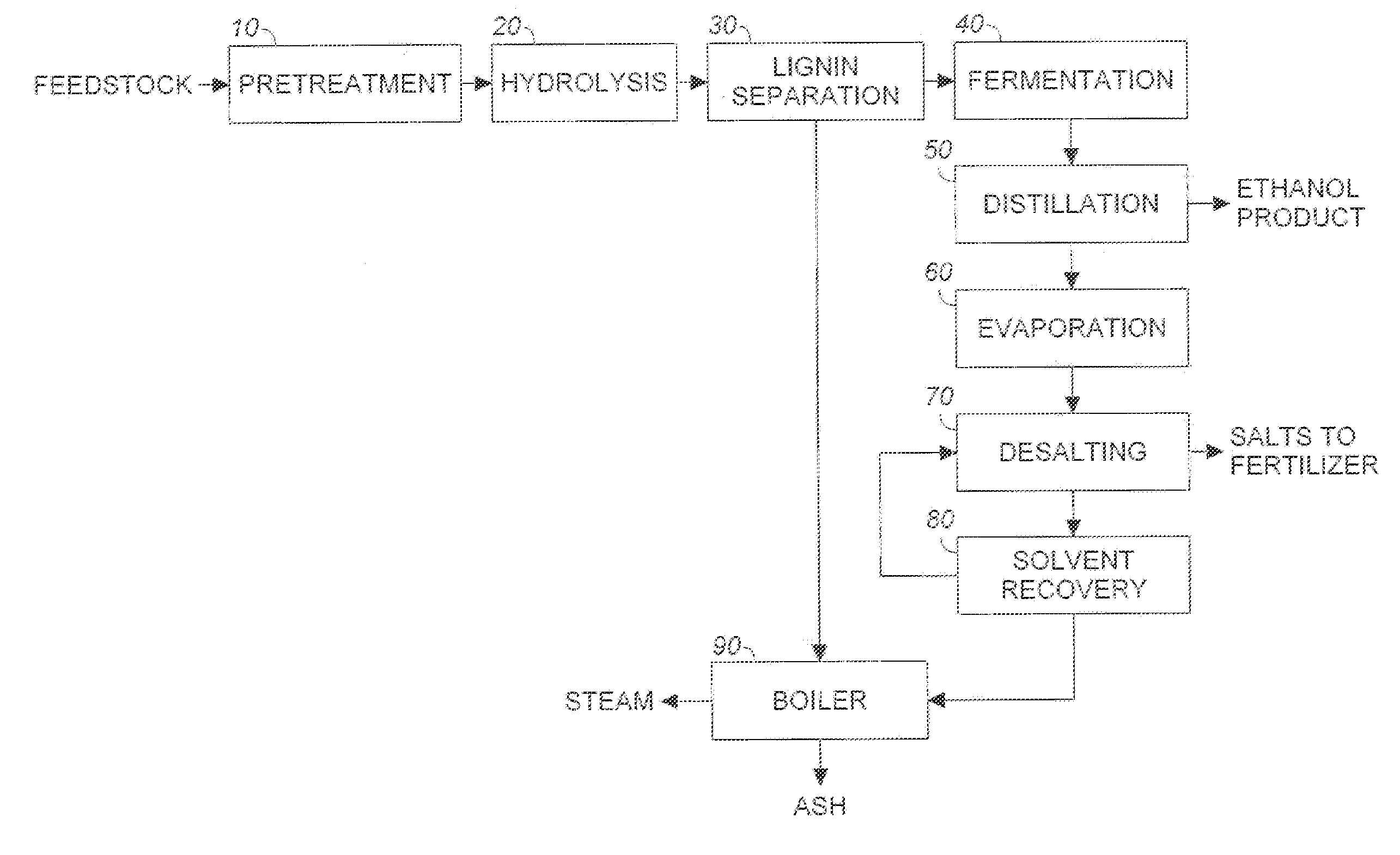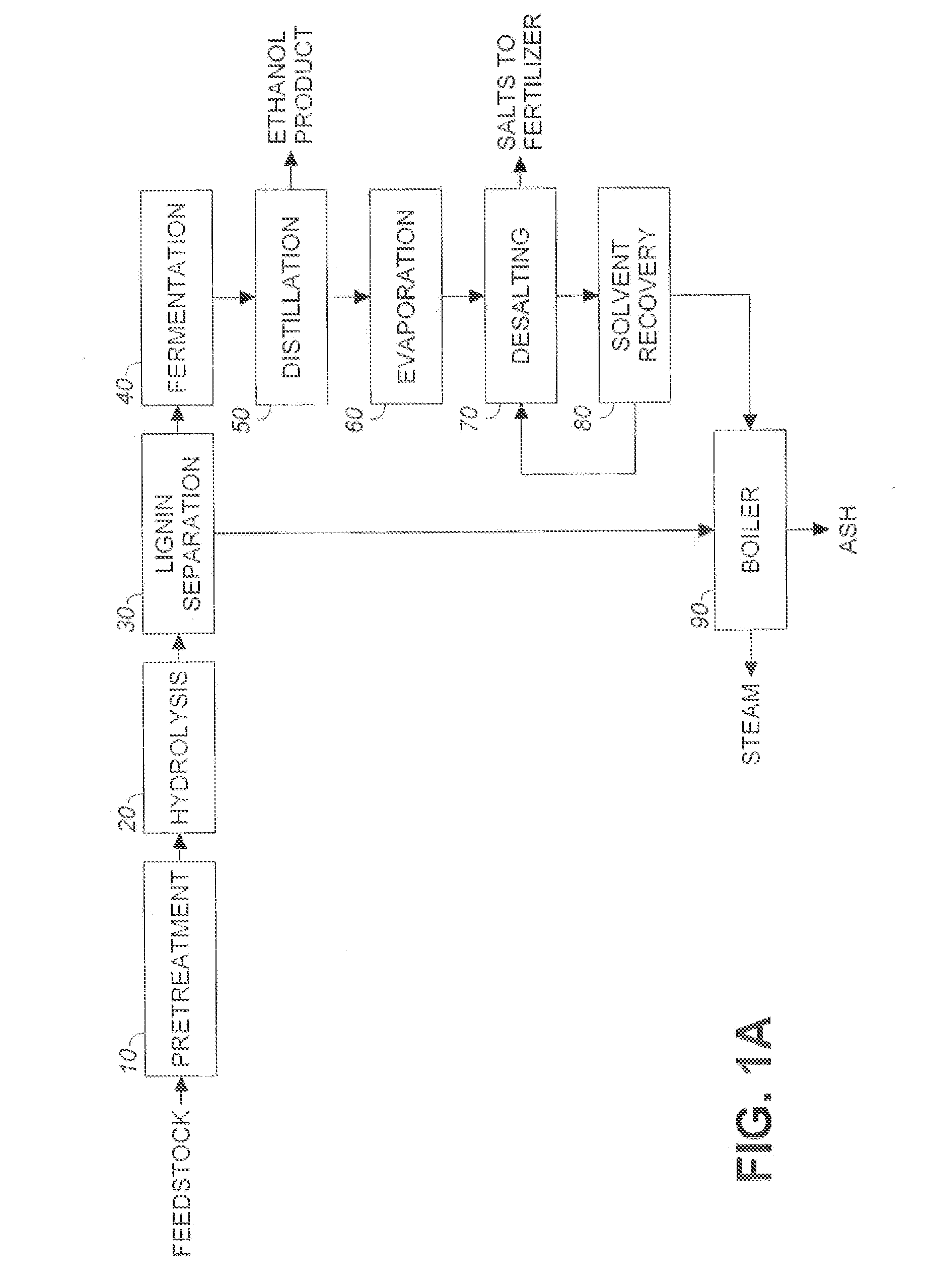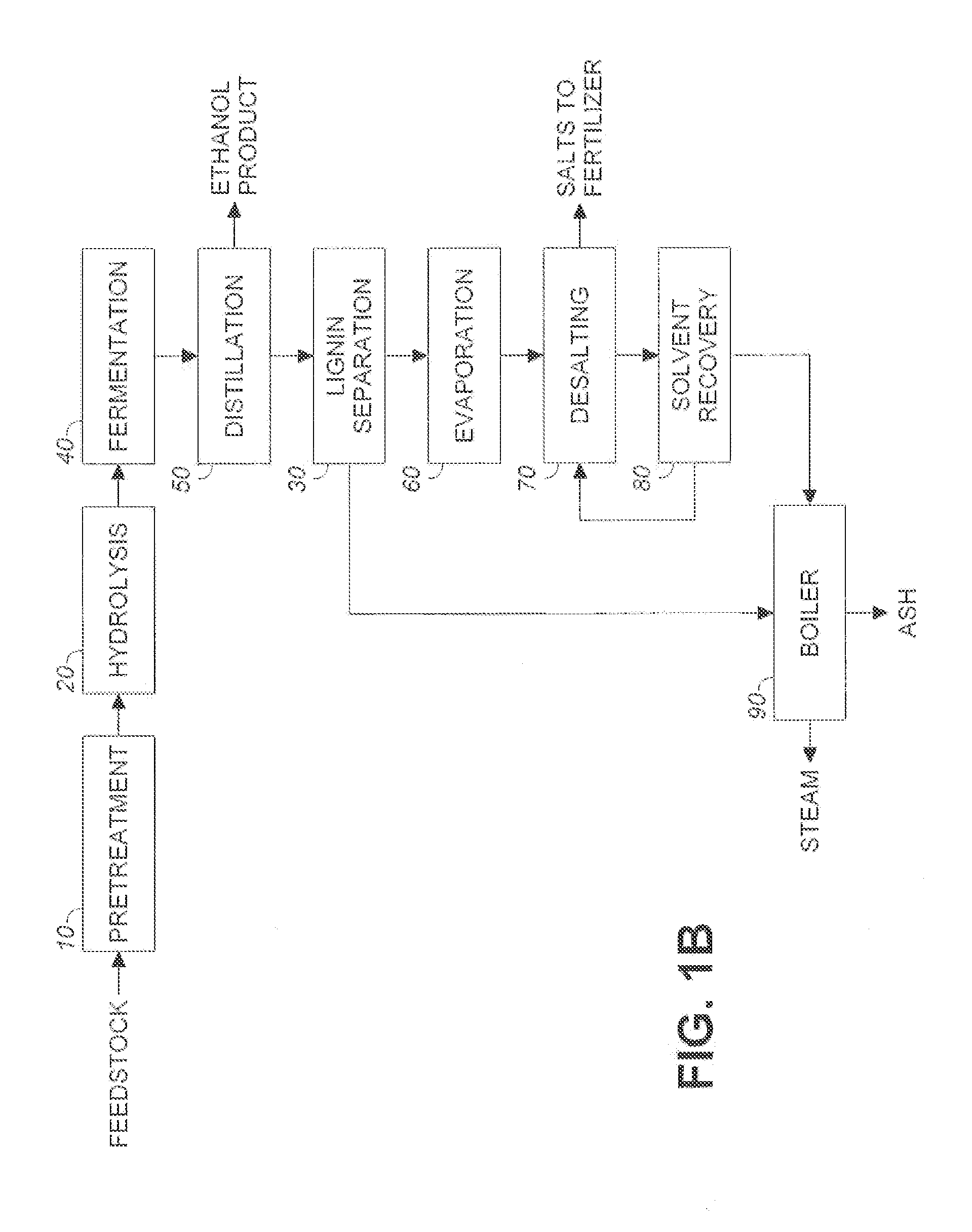Process for recovering salt during a lignocellulosic conversion process
a technology of lignocellulosic conversion and recovery process, which is applied in the direction of inorganic chemistry, bio-organic fraction processing, magnesium phosphate fertilisers, etc., to achieve the effect of improving the economics of the overall cellulose ethanol process
- Summary
- Abstract
- Description
- Claims
- Application Information
AI Technical Summary
Benefits of technology
Problems solved by technology
Method used
Image
Examples
example 1
The Production of Inorganic Salt and a Lignin Byproduct from a Lignocellulosic Conversion Process
[0091]The following example illustrates the origin of inorganic salts from a lignocellulosic conversion process that converts sugar to ethanol, by a process comprising pretreatment of a lignocellulosic feedstock, enzymatic hydrolysis of cellulose to produce glucose, fermentation of the glucose to ethanol and concentration of the ethanol by distillation. As outlined below, the inorganic salts arise from both alkali salts endogenous to the feedstock and from process chemicals added during the process. These salts are then carried through to a still bottoms stream that remains after concentration of the ethanol by distillation.
[0092]This example also describes the stages of the process where streams arise that comprise lignin as a predominant component.
[0093]In addition to cellulose, hemicellulose and lignin, the lignocellulosic feedstock contains many secondary components, present in quant...
example 2
The Combustion of Lignin and Concentrated Still Bottoms from a Lignocellulosic Feedstock without Salt Removal
[0103]The following example serves to illustrate that the presence of inorganic salts, namely ammonia, ammonium and sulfate salts, derived from endogenous salts in the cellulosic ethanol feedstock and introduced as process chemicals during the production process can compromise the performance of combined incineration of still bottoms and lignin through the production of regulated pollutants or the formation of salt slags. In this example, the incineration is carried out in a fluidized bed boiler system. Production of regulated pollutants originating from the originating from the inorganic salts increases the cost and complexity of the boiler flue gas scrubbing system and may generate large quantities of chemical waste which requires handling, processing, and disposal. Furthermore, formation of salt slags may impede operation of a fluidized bed boiler system by causing bed agg...
example 3
Alcohol Precipitation of Inorganic Salts from the Concentrated Still Bottoms Stream
[0110]The concentrated still bottoms stream described in Example 2 was subjected to an alcohol treatment process to precipitate the salts, and reduce the problems associated with the salts in the boiler system. At the laboratory scale, a 100 mL sample of concentrated still bottoms was mixed with methanol at room temperature; the volume ratio of concentrated still bottoms to methanol was 1:4 in this example, but other ratios and temperatures would give similar results. The mixture was allowed to stir for 10 minutes, and the precipitate that formed was filtered using a standard medium porosity sintered glass crucible. The collected solids were washed with a 100 mL of cold methanol to initial still bottoms, and the washings combined with the initial filtrate. The combined filtrates were evaporated in at 50° C. at reduced pressure in a standard laboratory roto-evaporator, until the concentrate volume was ...
PUM
| Property | Measurement | Unit |
|---|---|---|
| Fraction | aaaaa | aaaaa |
| Composition | aaaaa | aaaaa |
| Solubility (mass) | aaaaa | aaaaa |
Abstract
Description
Claims
Application Information
 Login to View More
Login to View More - R&D
- Intellectual Property
- Life Sciences
- Materials
- Tech Scout
- Unparalleled Data Quality
- Higher Quality Content
- 60% Fewer Hallucinations
Browse by: Latest US Patents, China's latest patents, Technical Efficacy Thesaurus, Application Domain, Technology Topic, Popular Technical Reports.
© 2025 PatSnap. All rights reserved.Legal|Privacy policy|Modern Slavery Act Transparency Statement|Sitemap|About US| Contact US: help@patsnap.com



